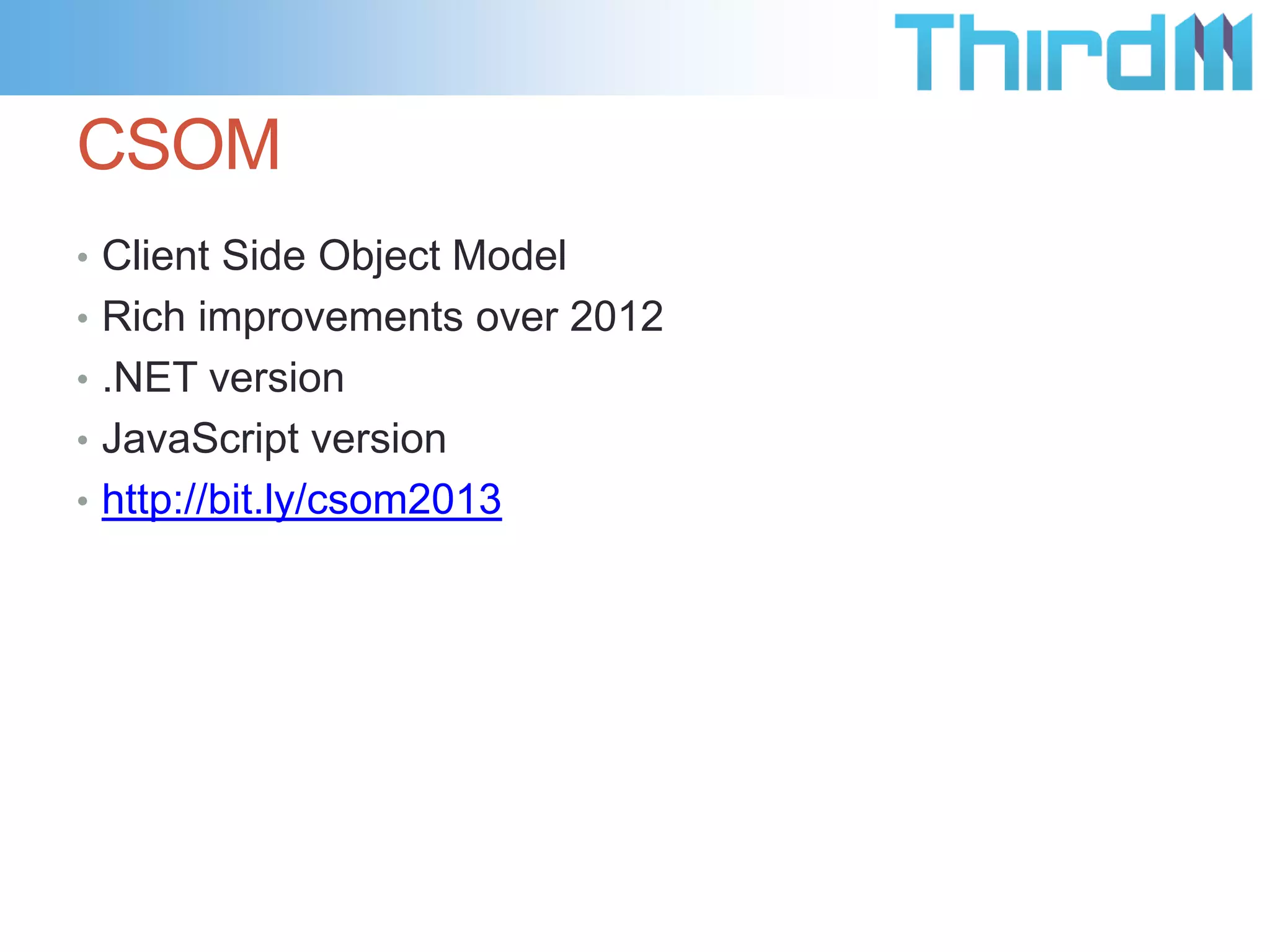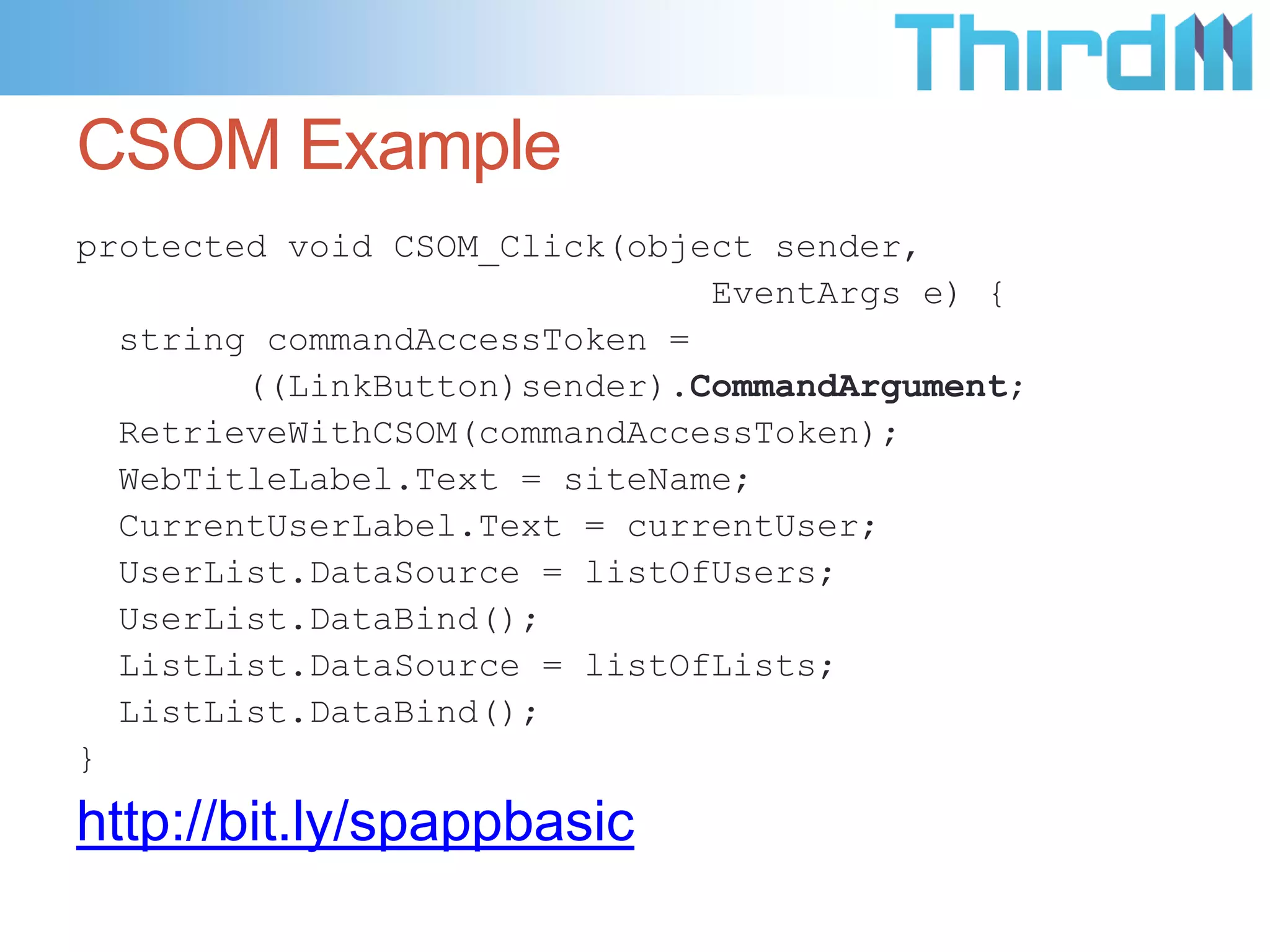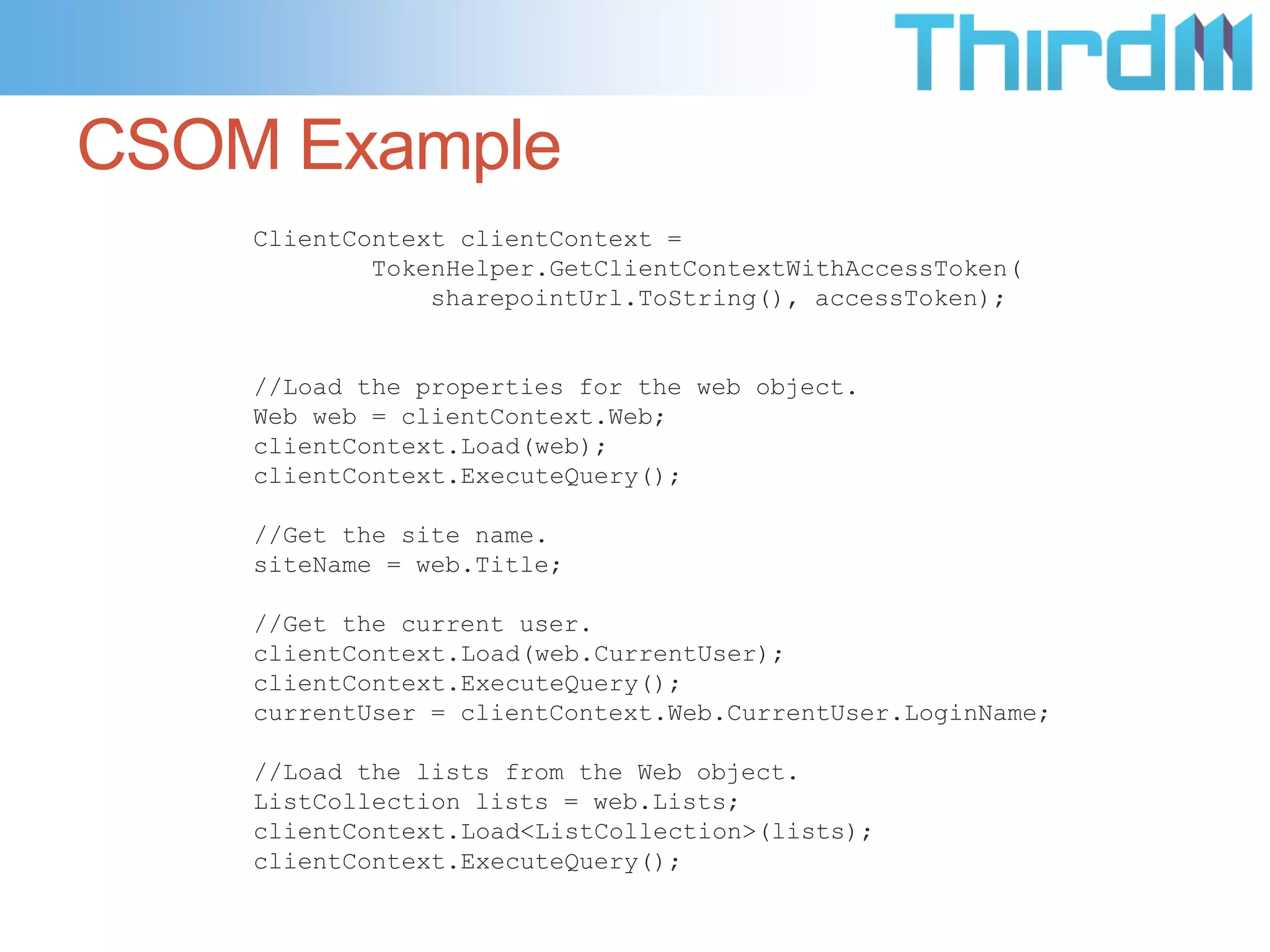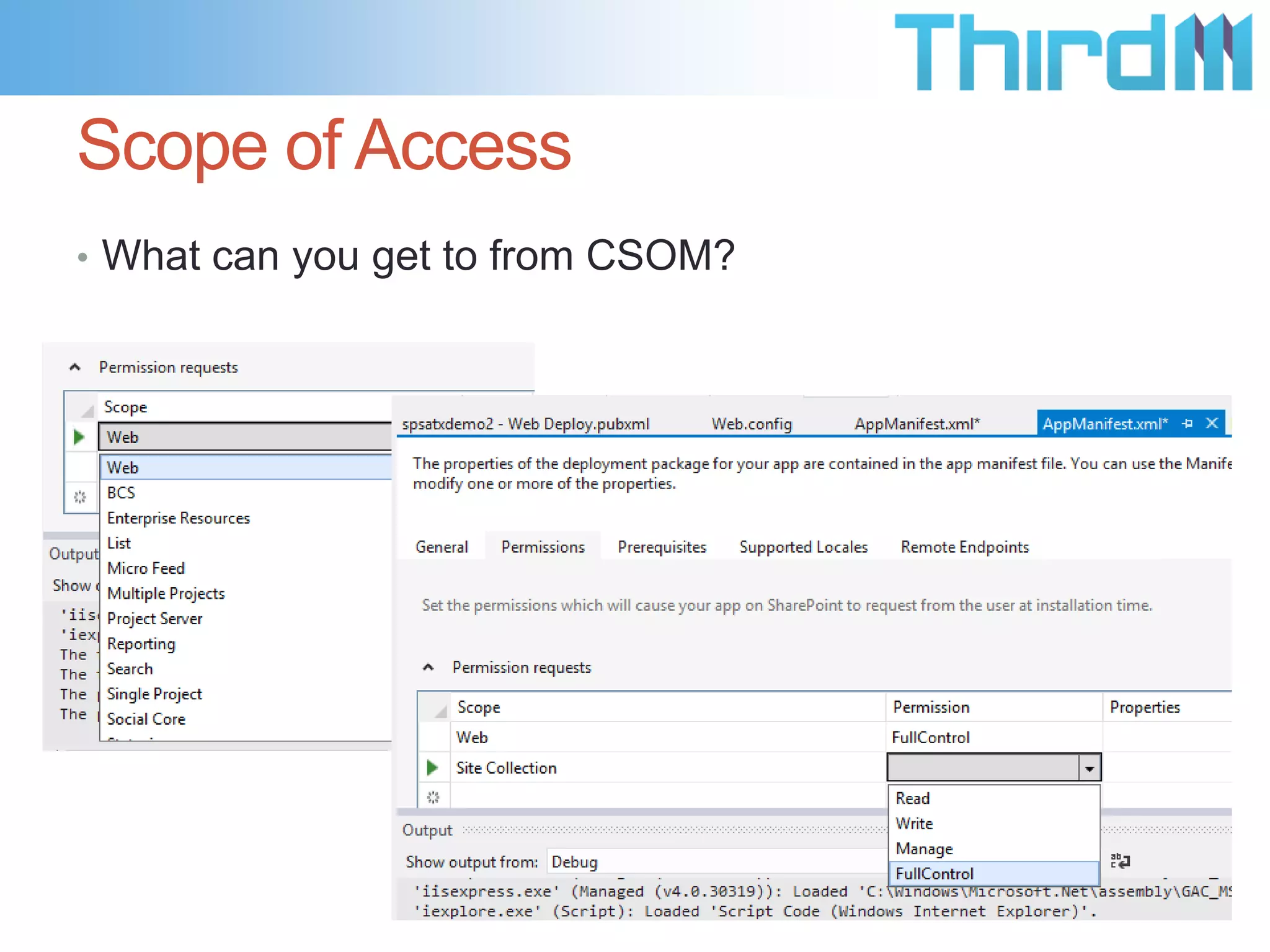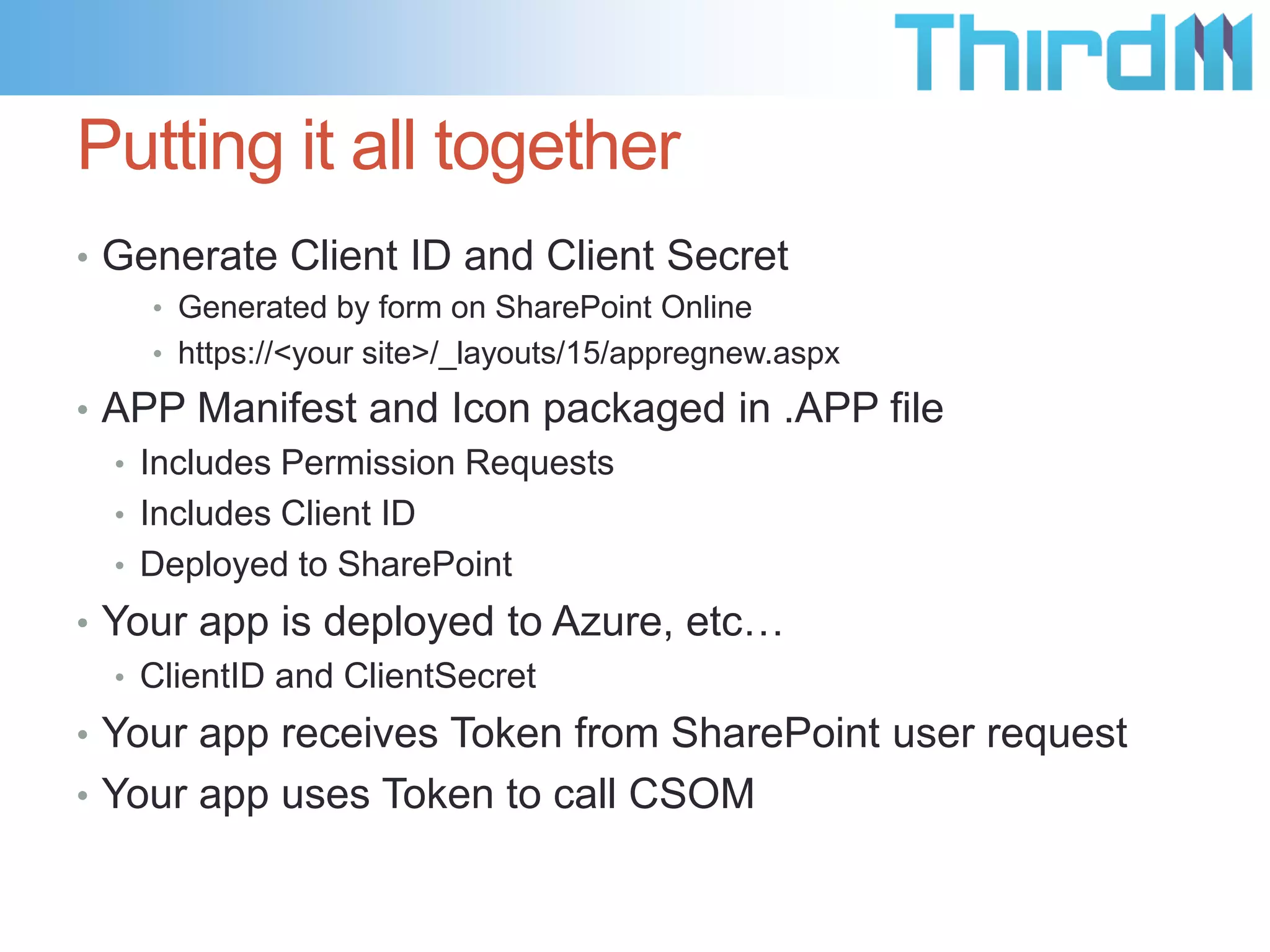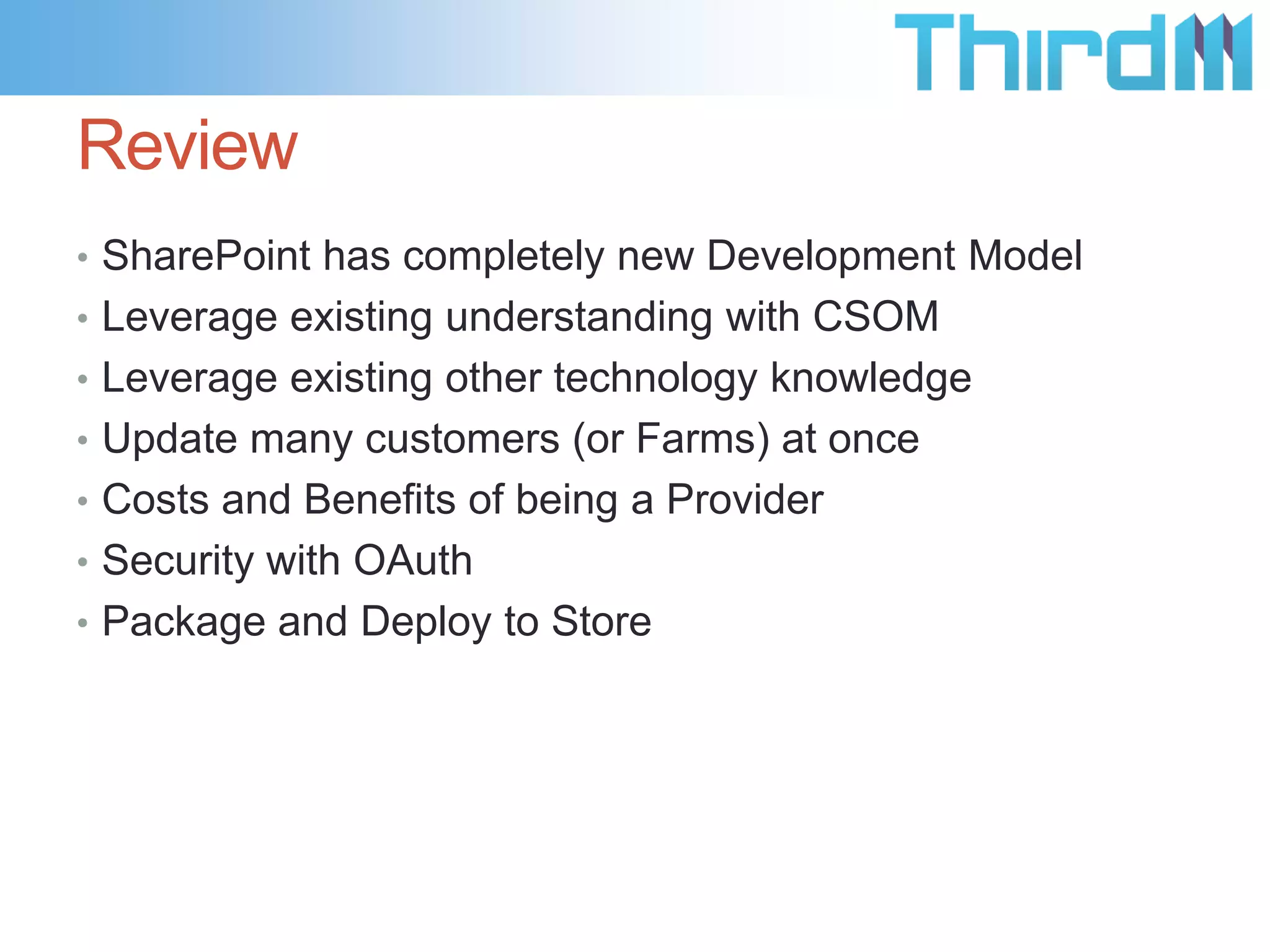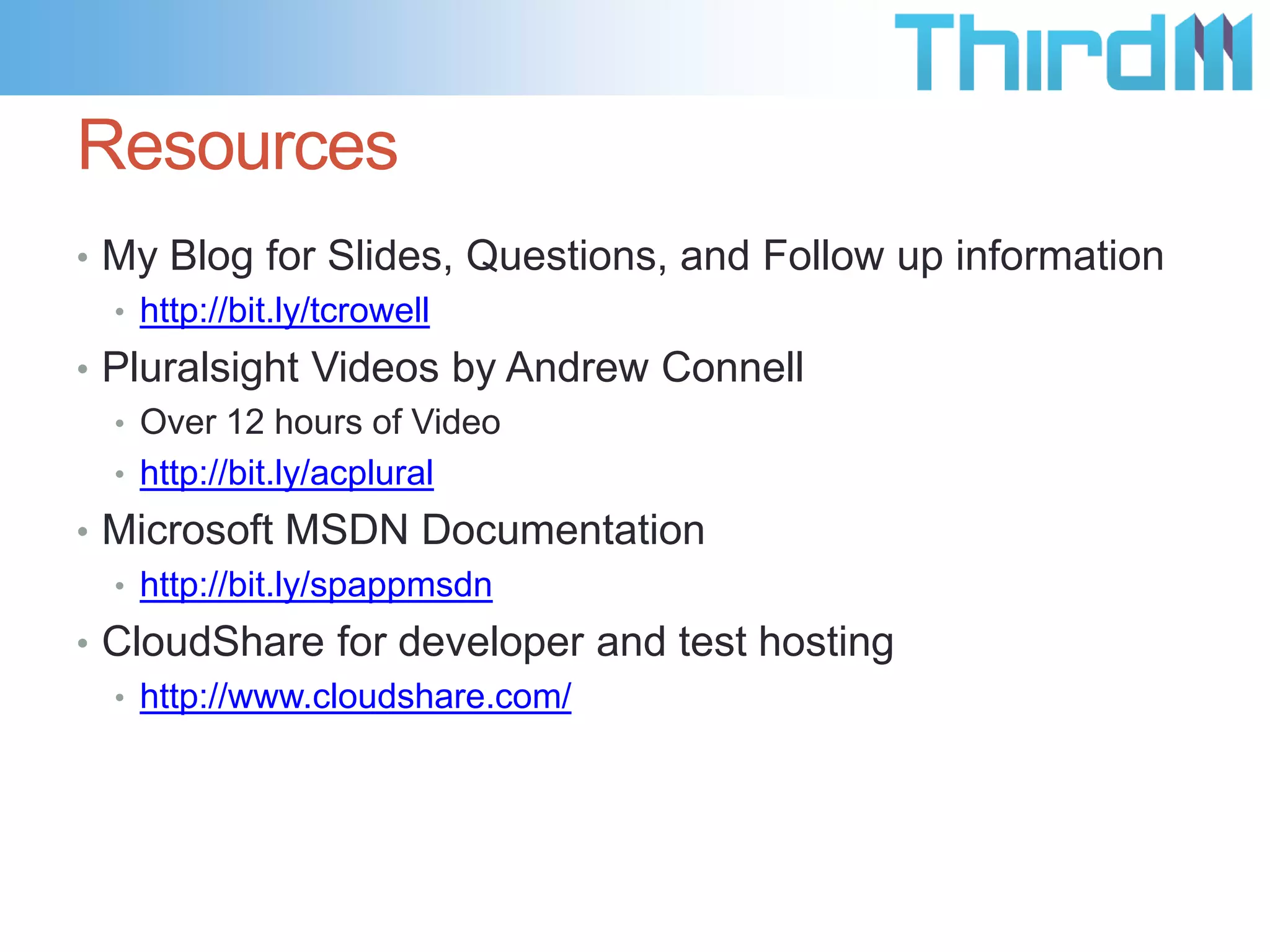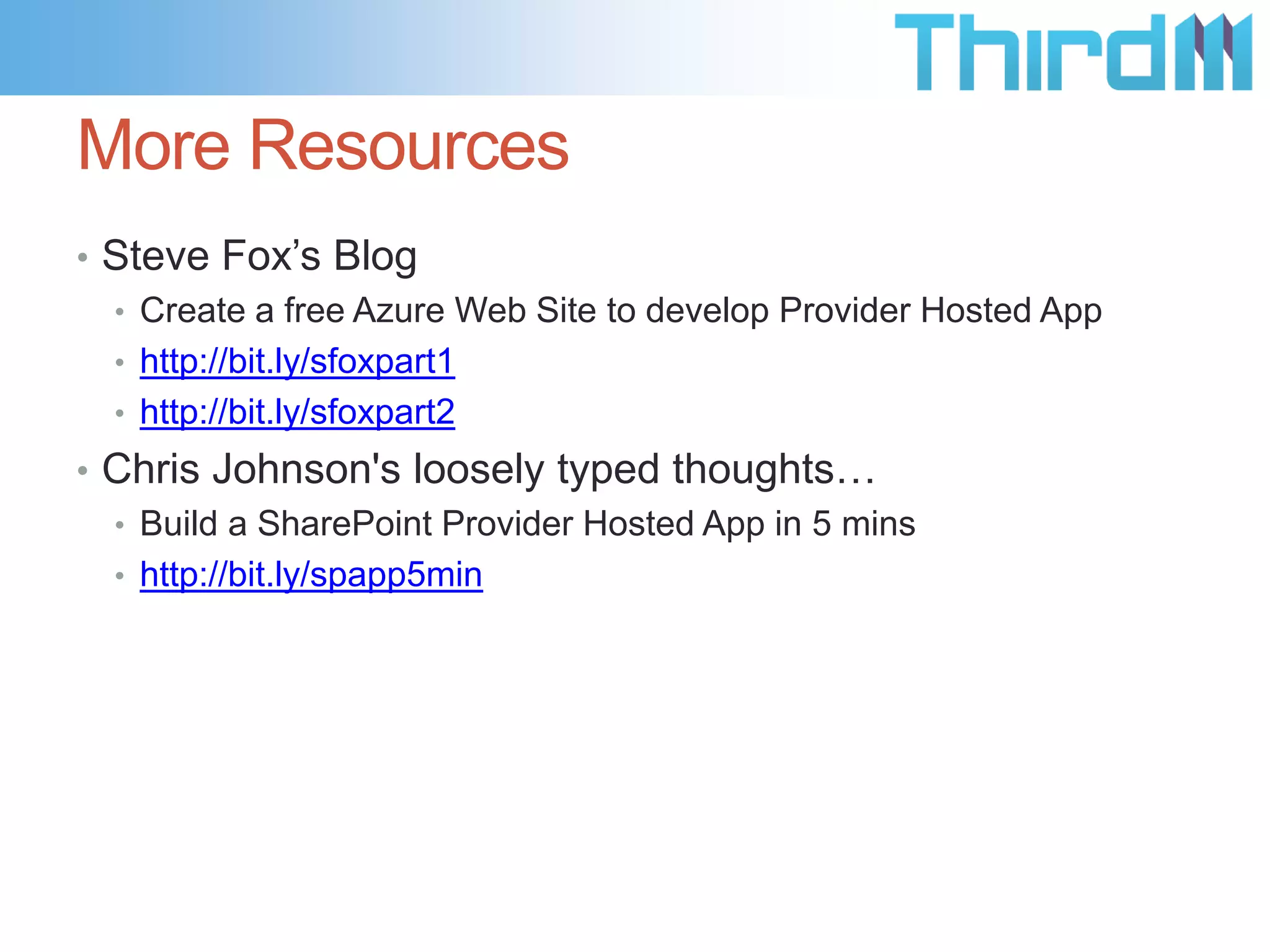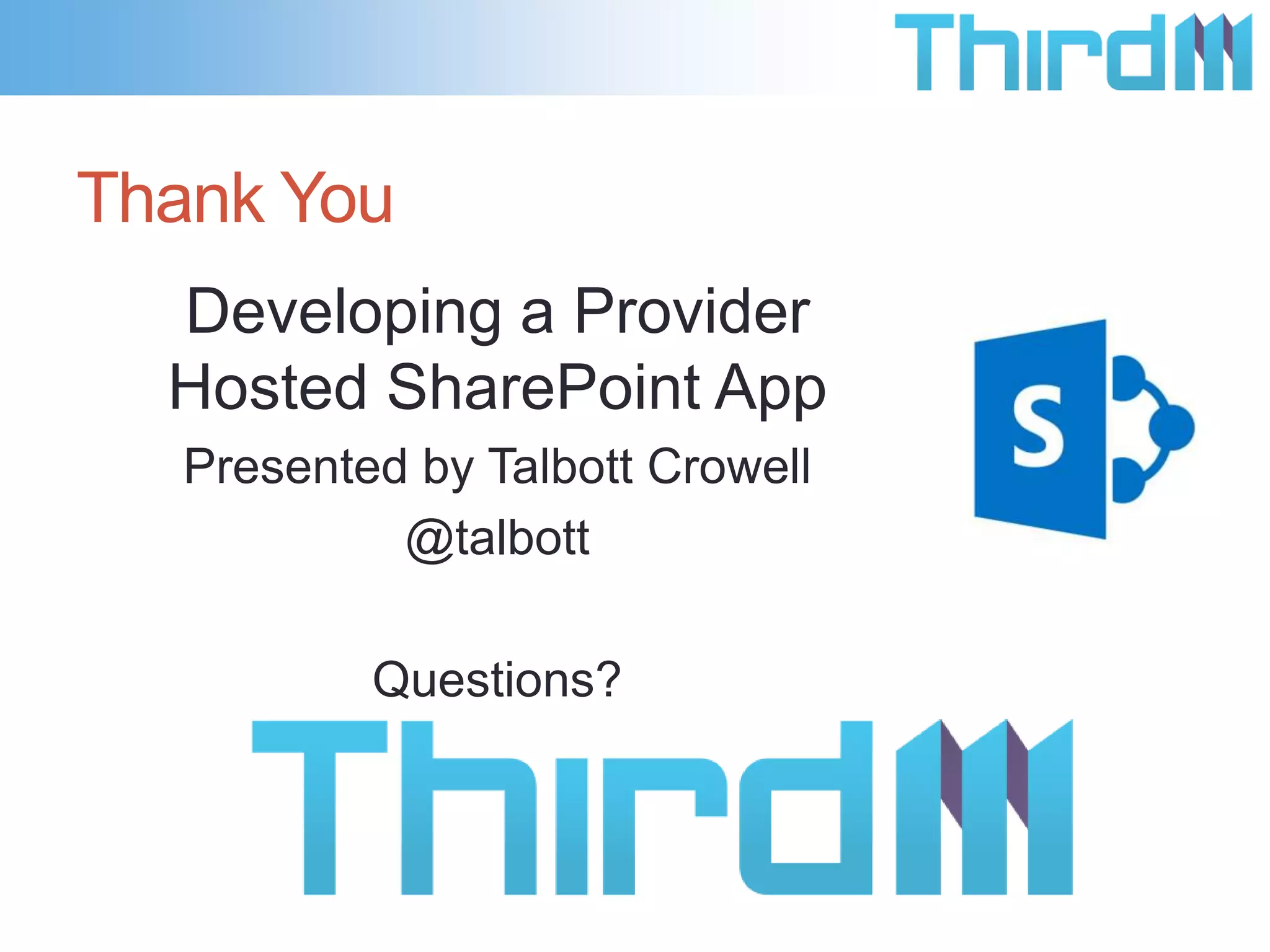This document summarizes a presentation about developing provider hosted SharePoint apps. It discusses:
1) What provider hosted apps are and how they are hosted outside of SharePoint and can be developed using any language.
2) The history of customizing SharePoint and how apps differ from past methods like farm solutions.
3) The options for hosting apps, including provider hosted, autohosted, and SharePoint hosted.
4) Considerations for providers like maintaining hosting costs and updating customers.
5) The development process including using Visual Studio and the app manifest to define permissions.
6) How to authenticate with OAuth and make calls to SharePoint using the client-side object model.
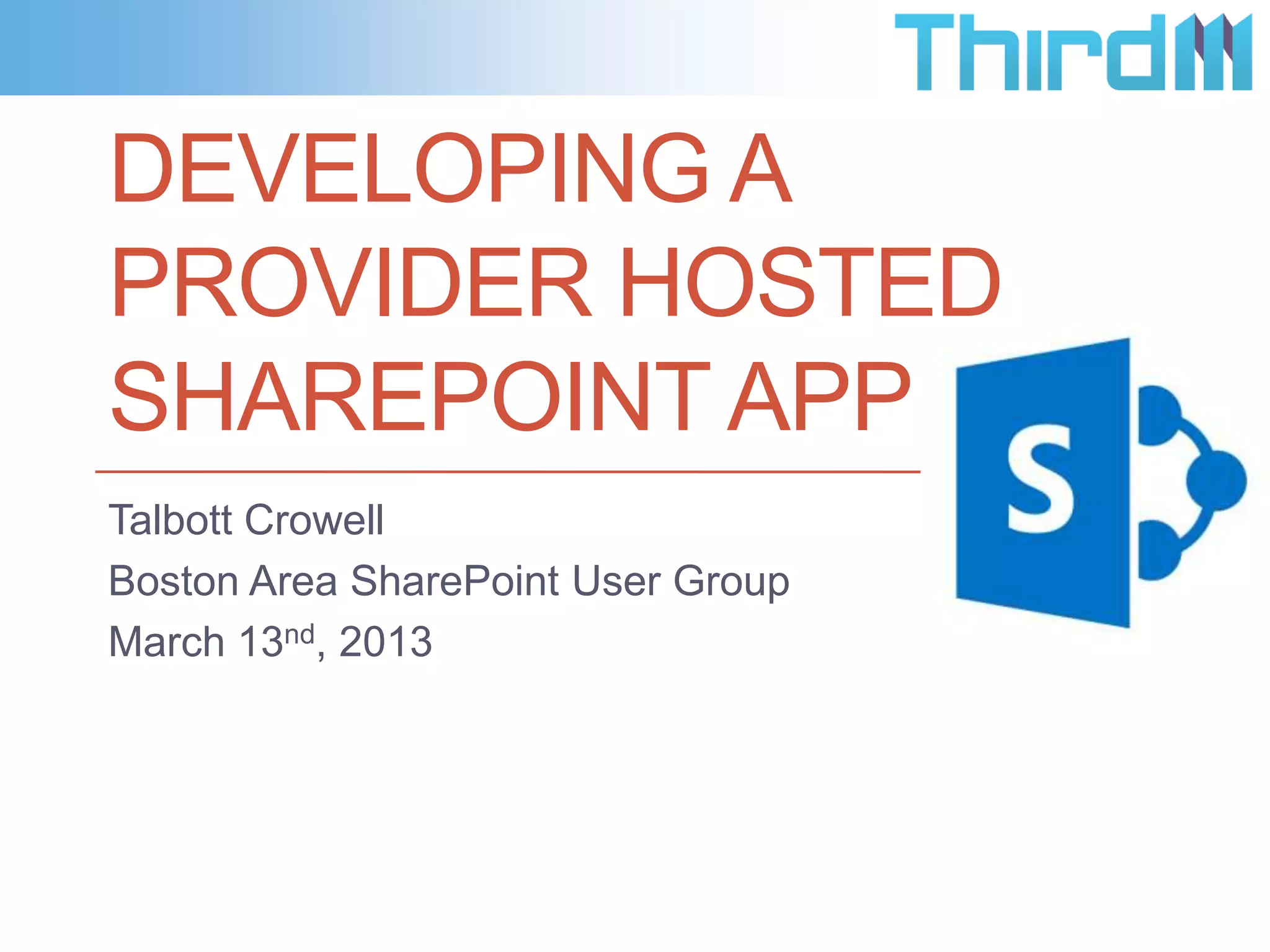
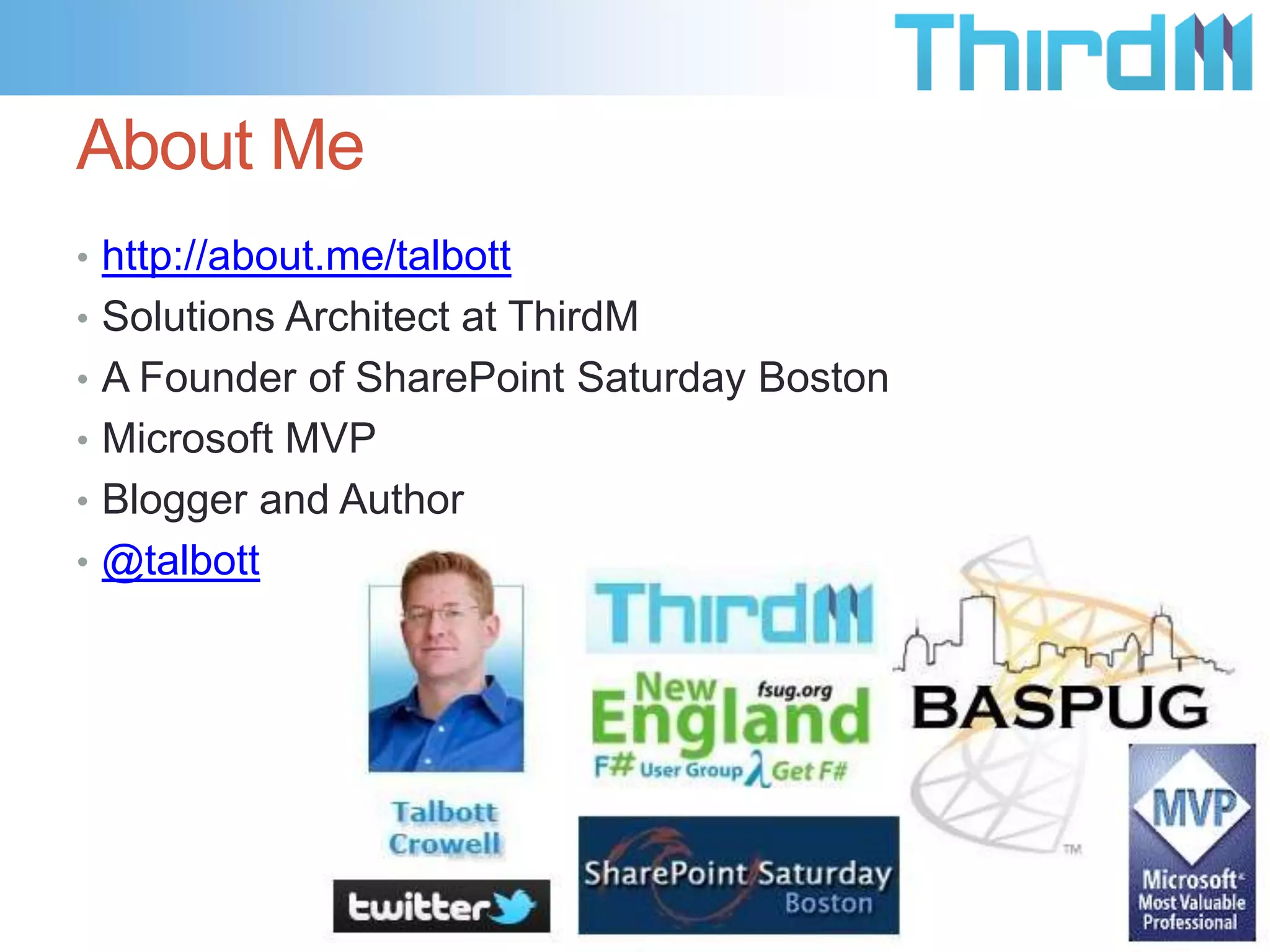
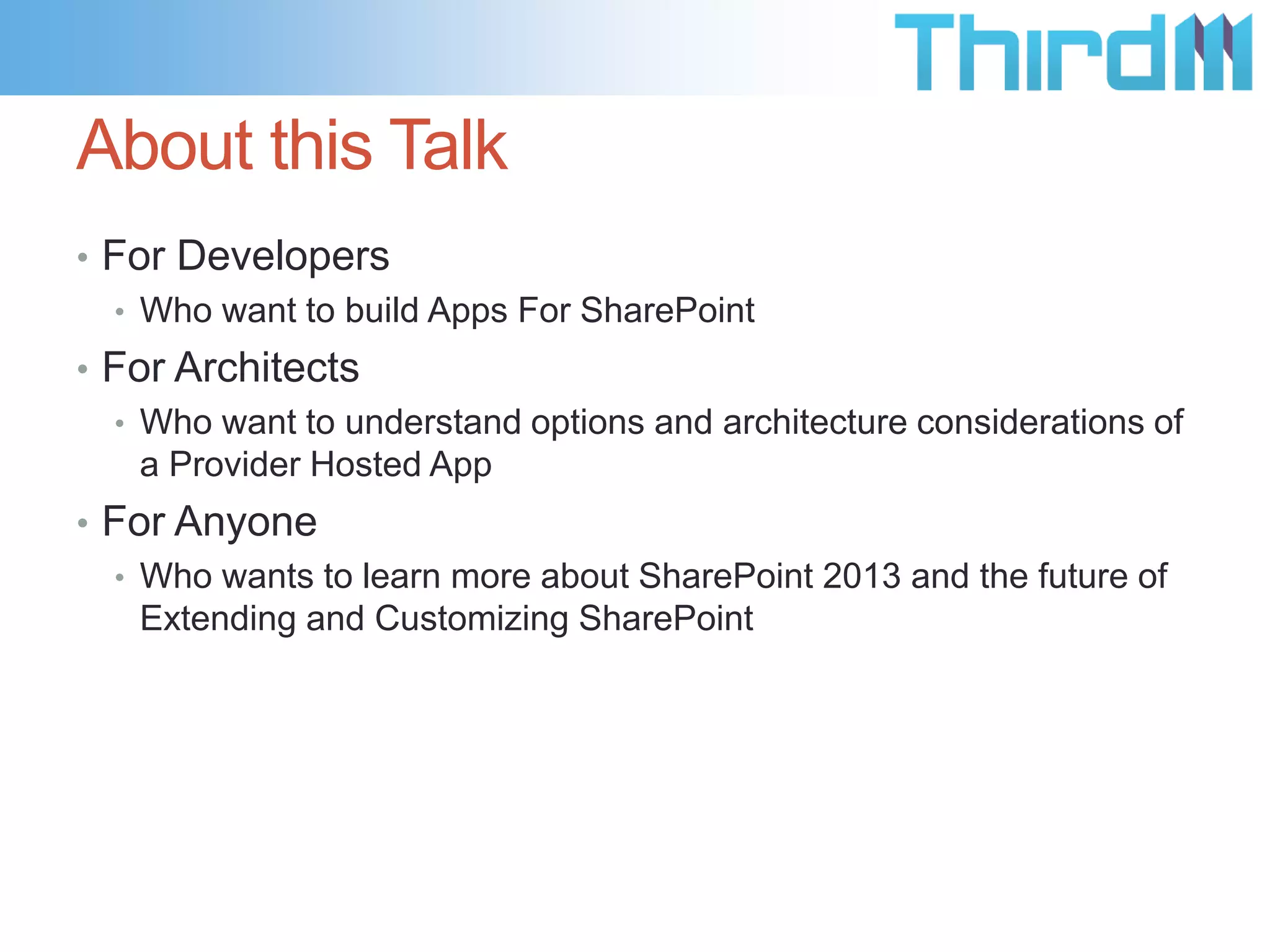
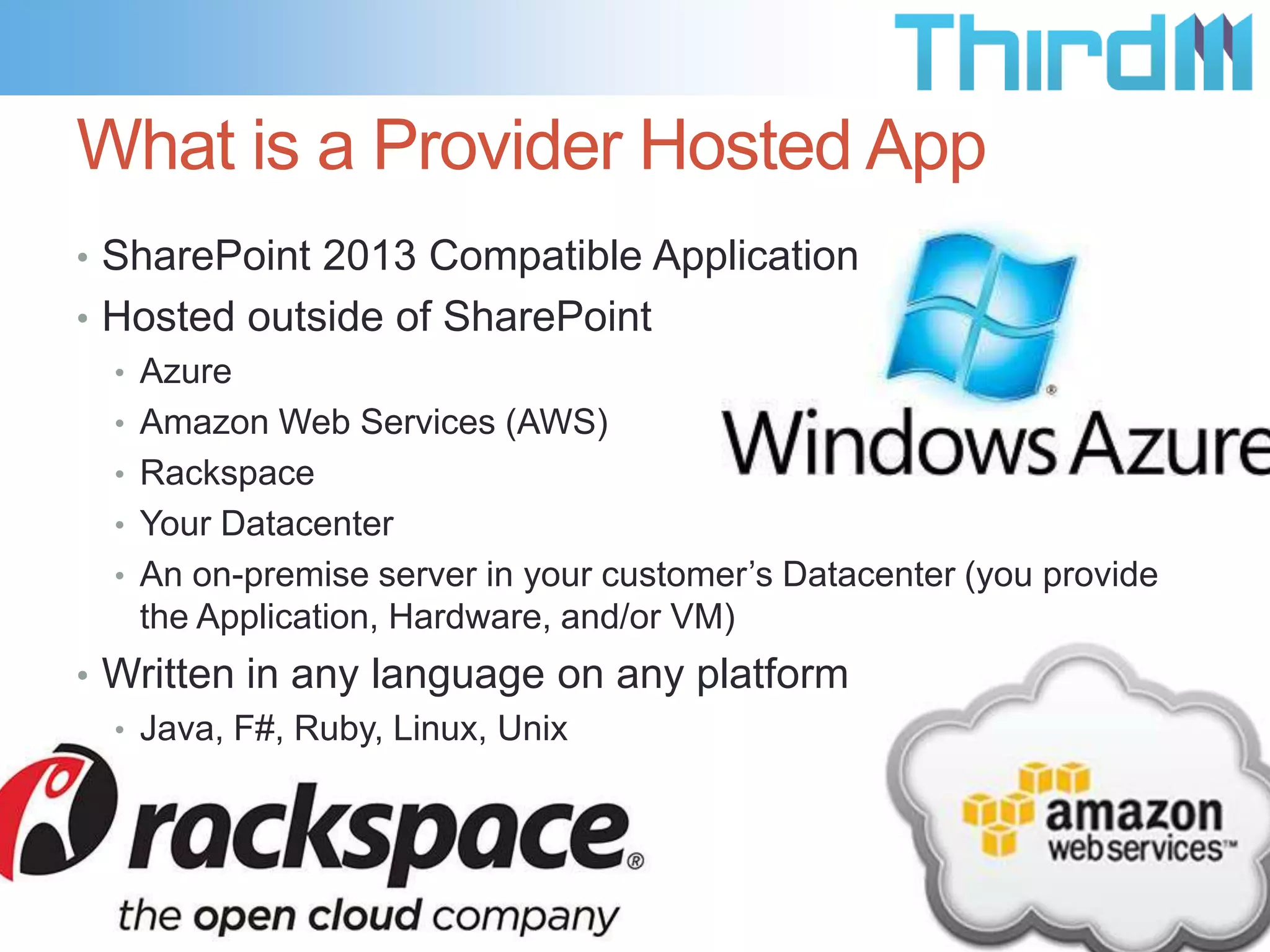
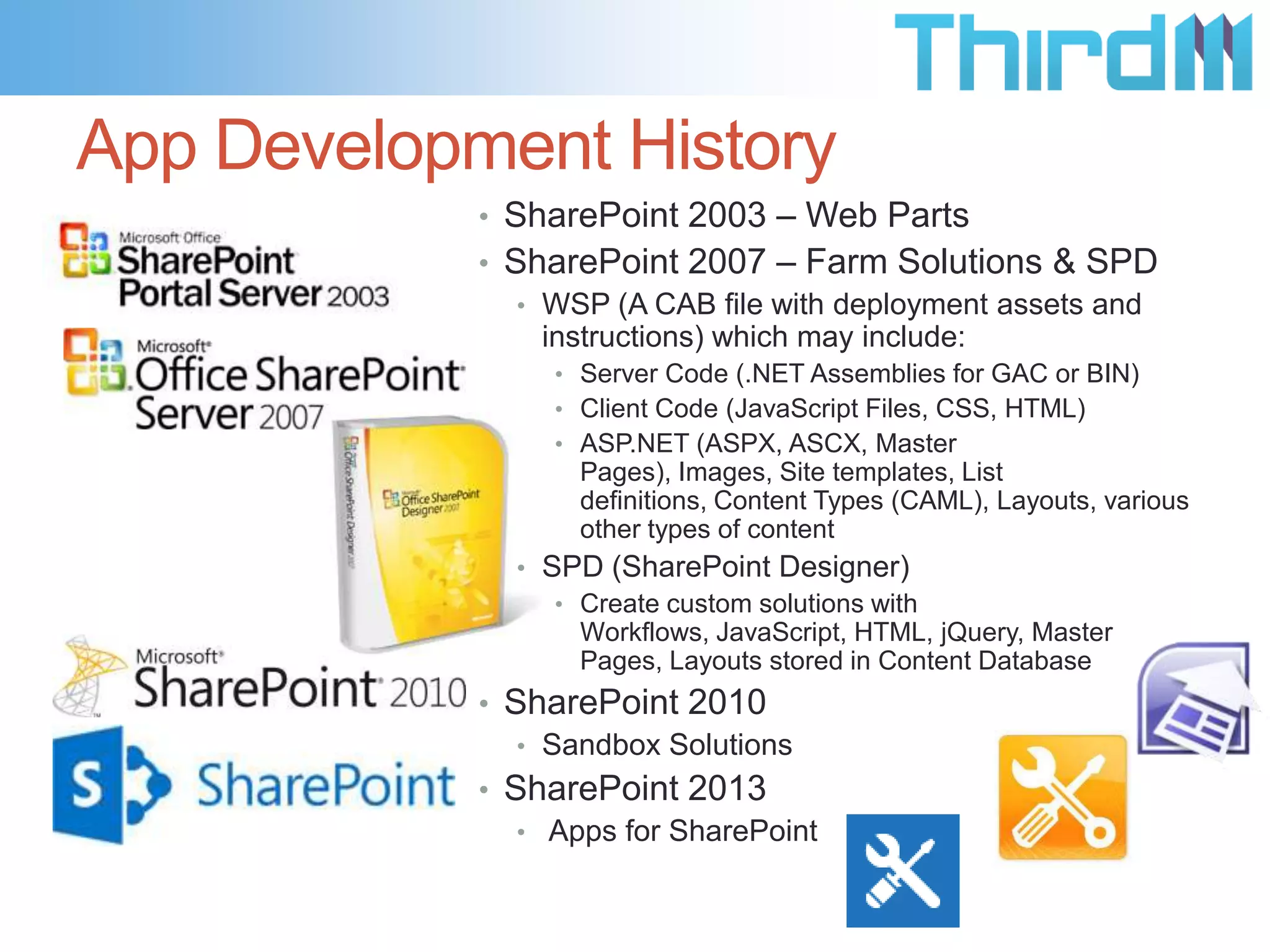
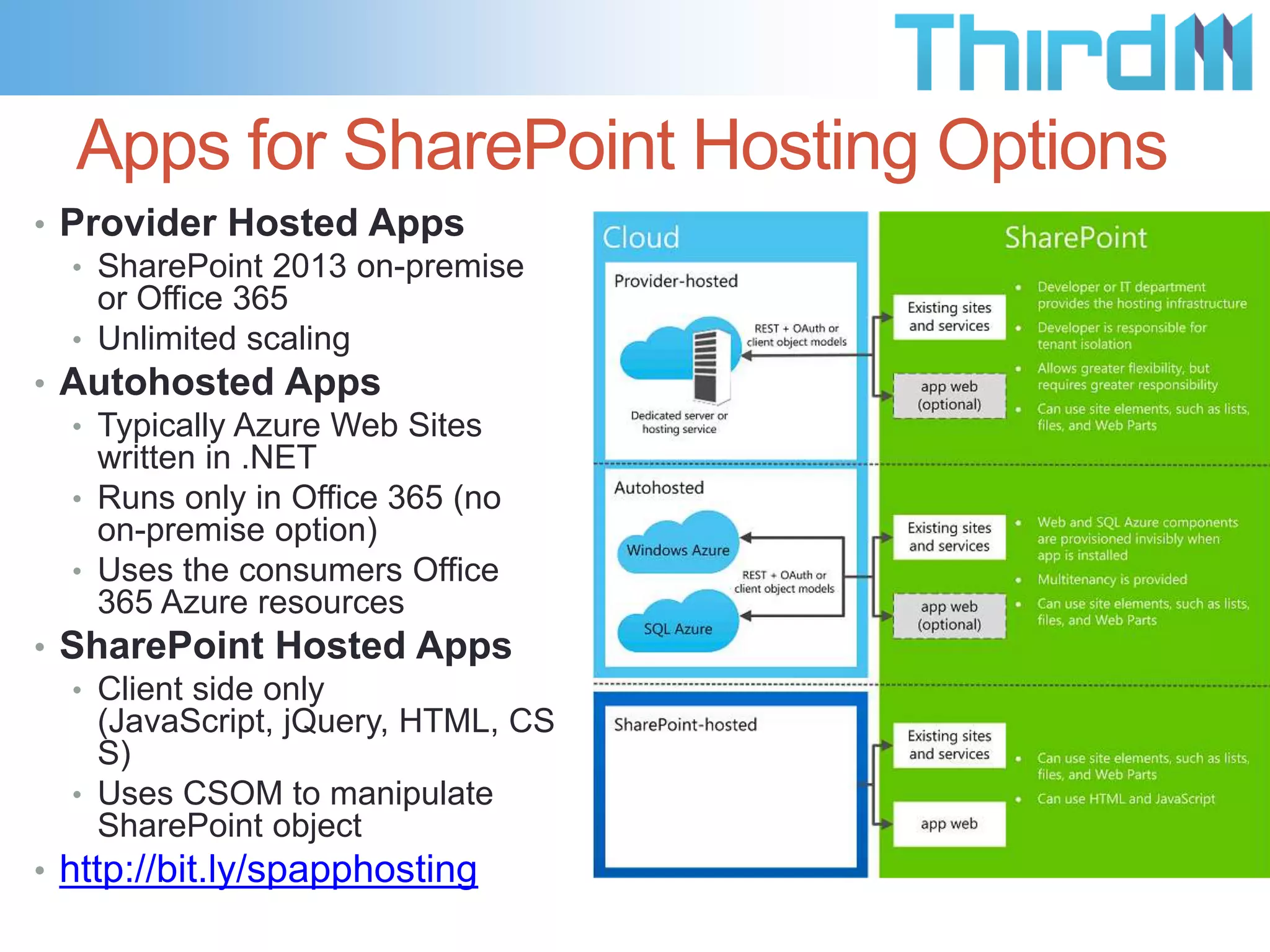
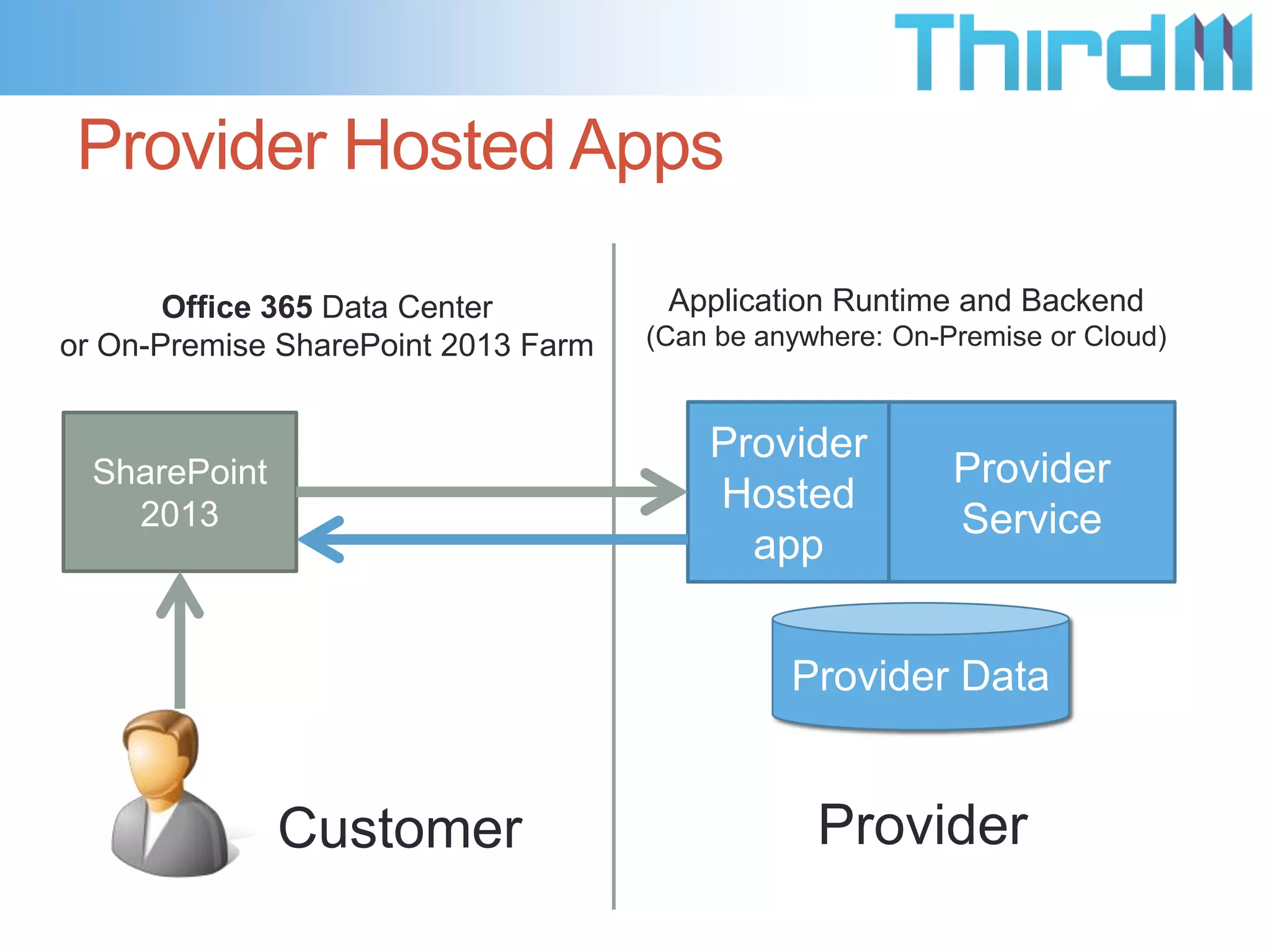
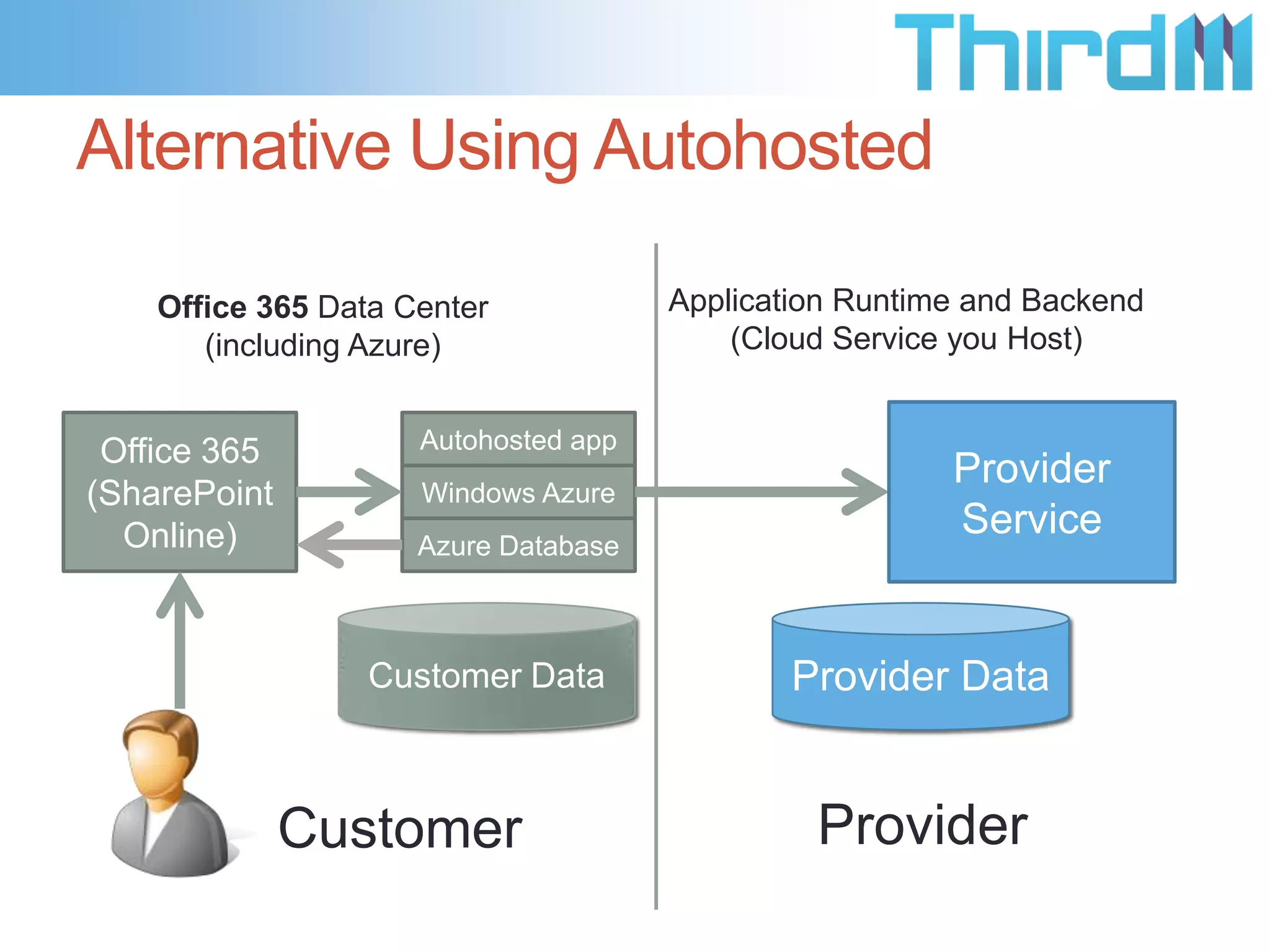
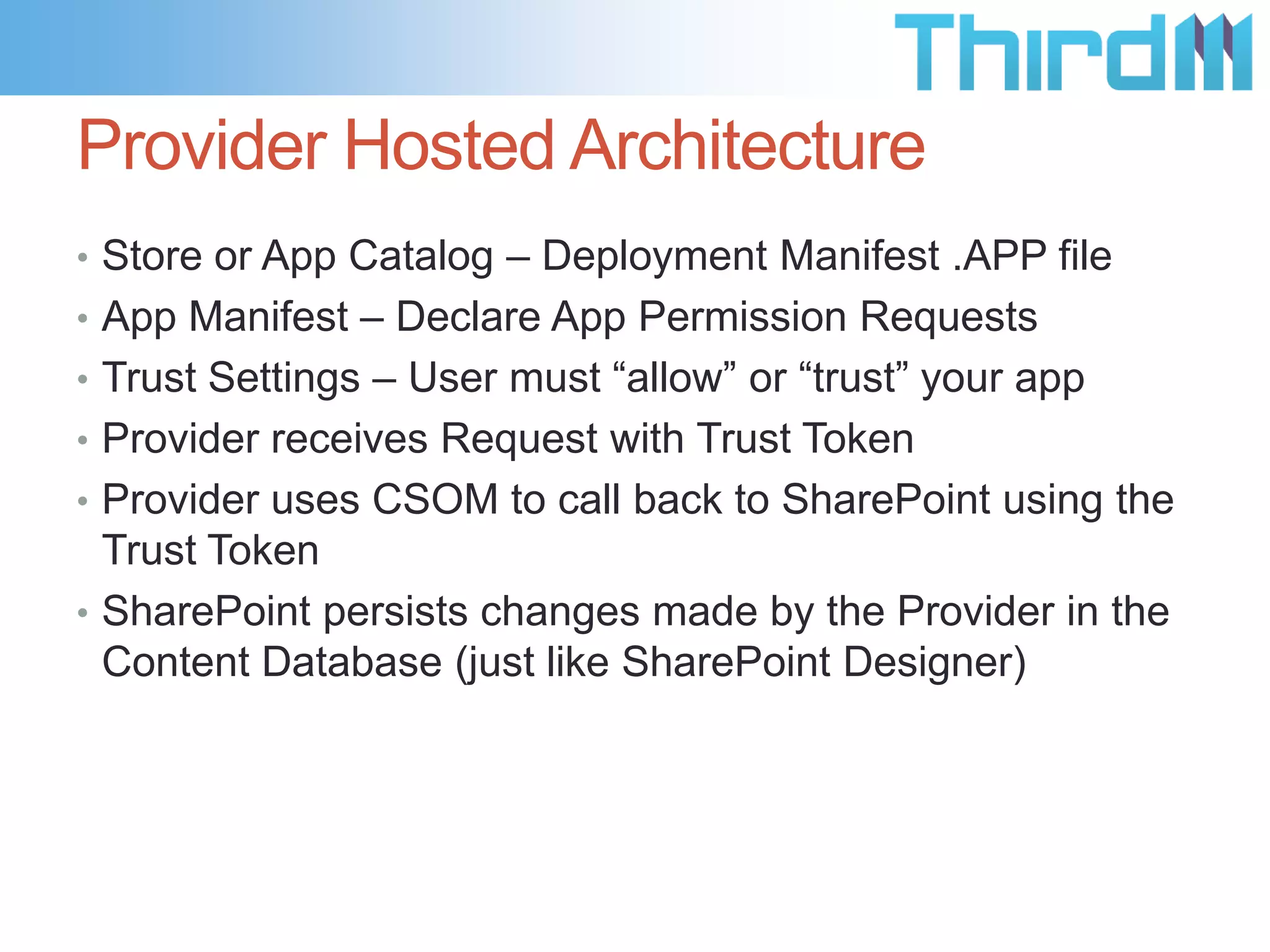
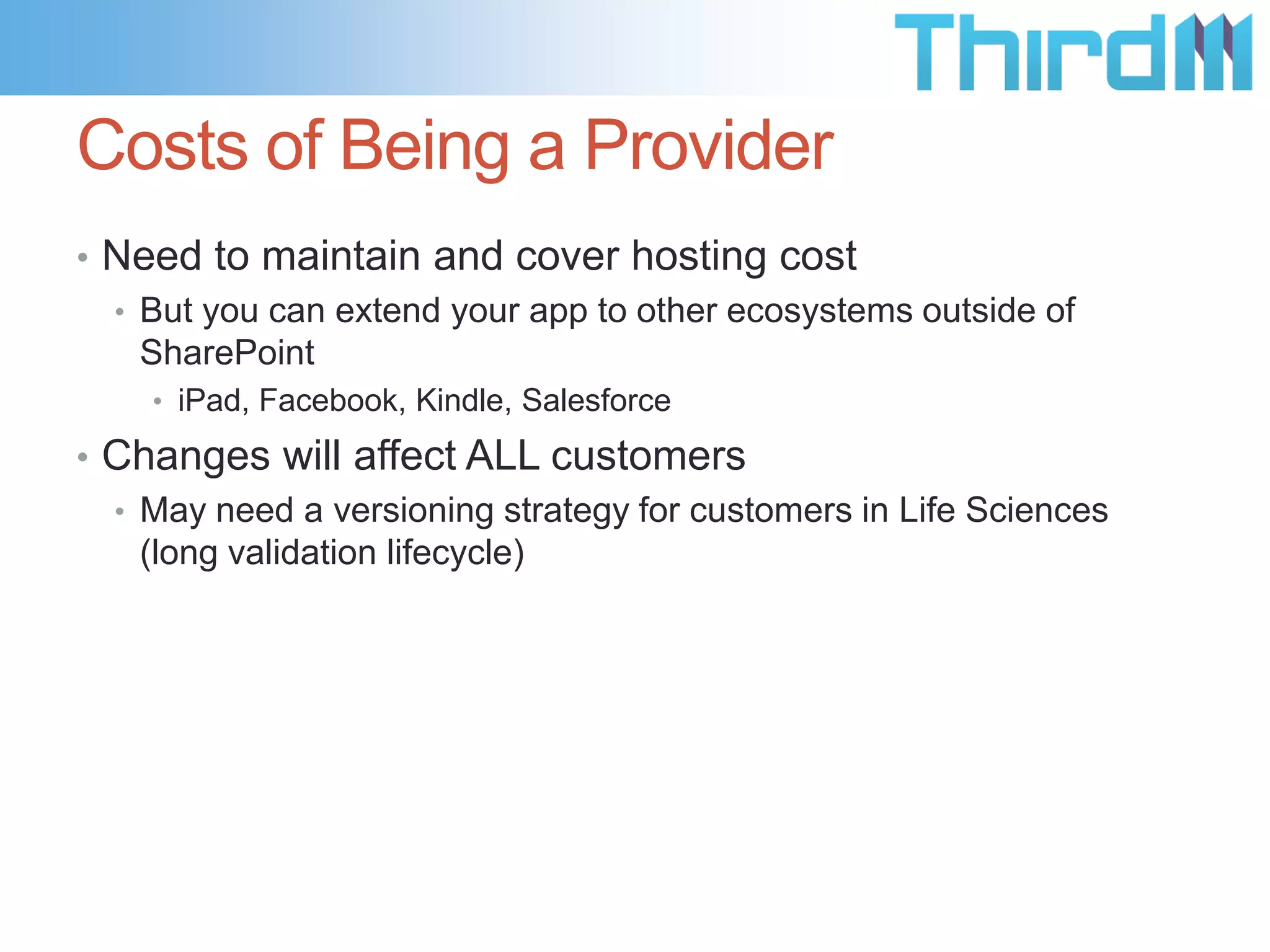
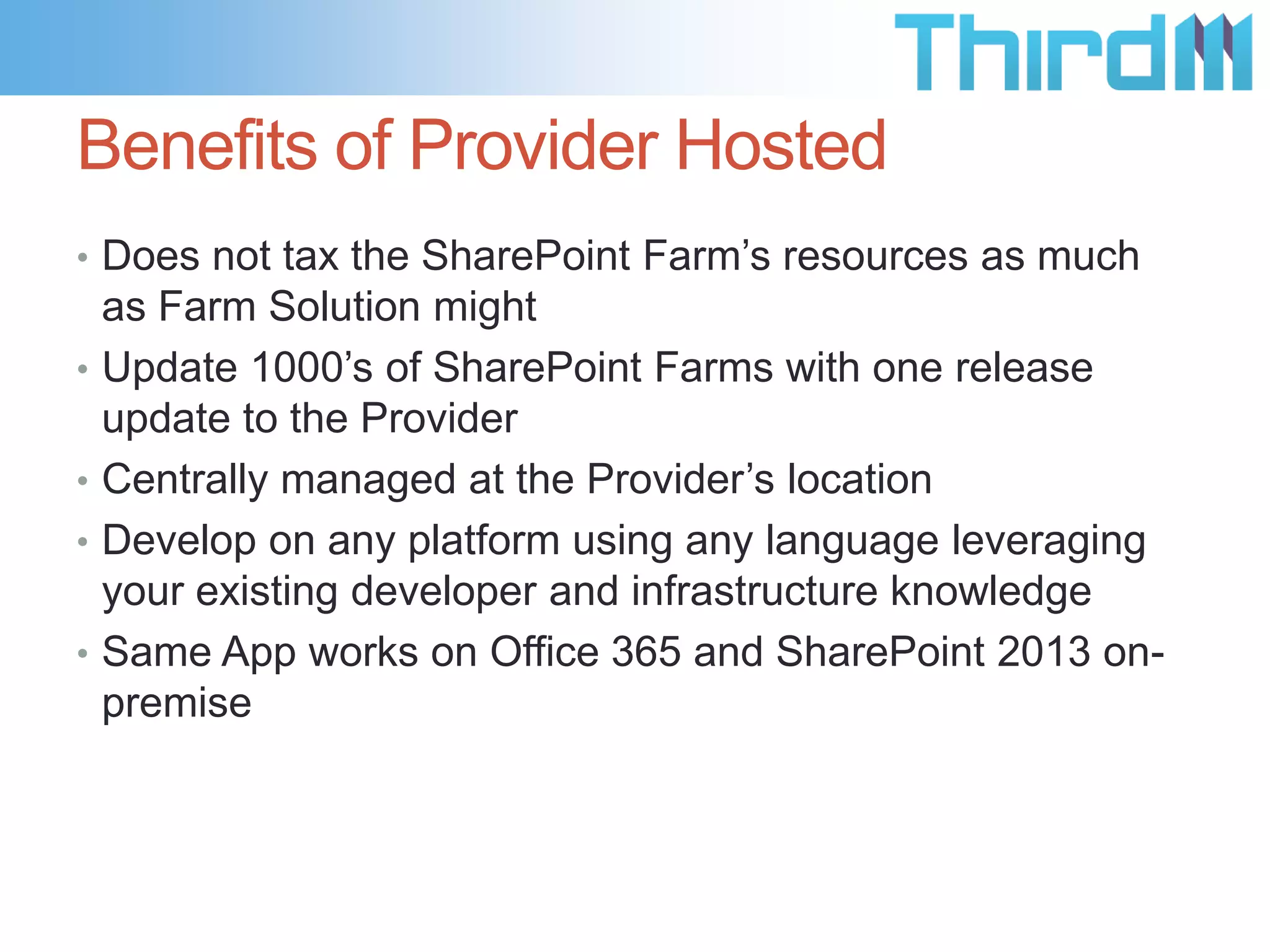
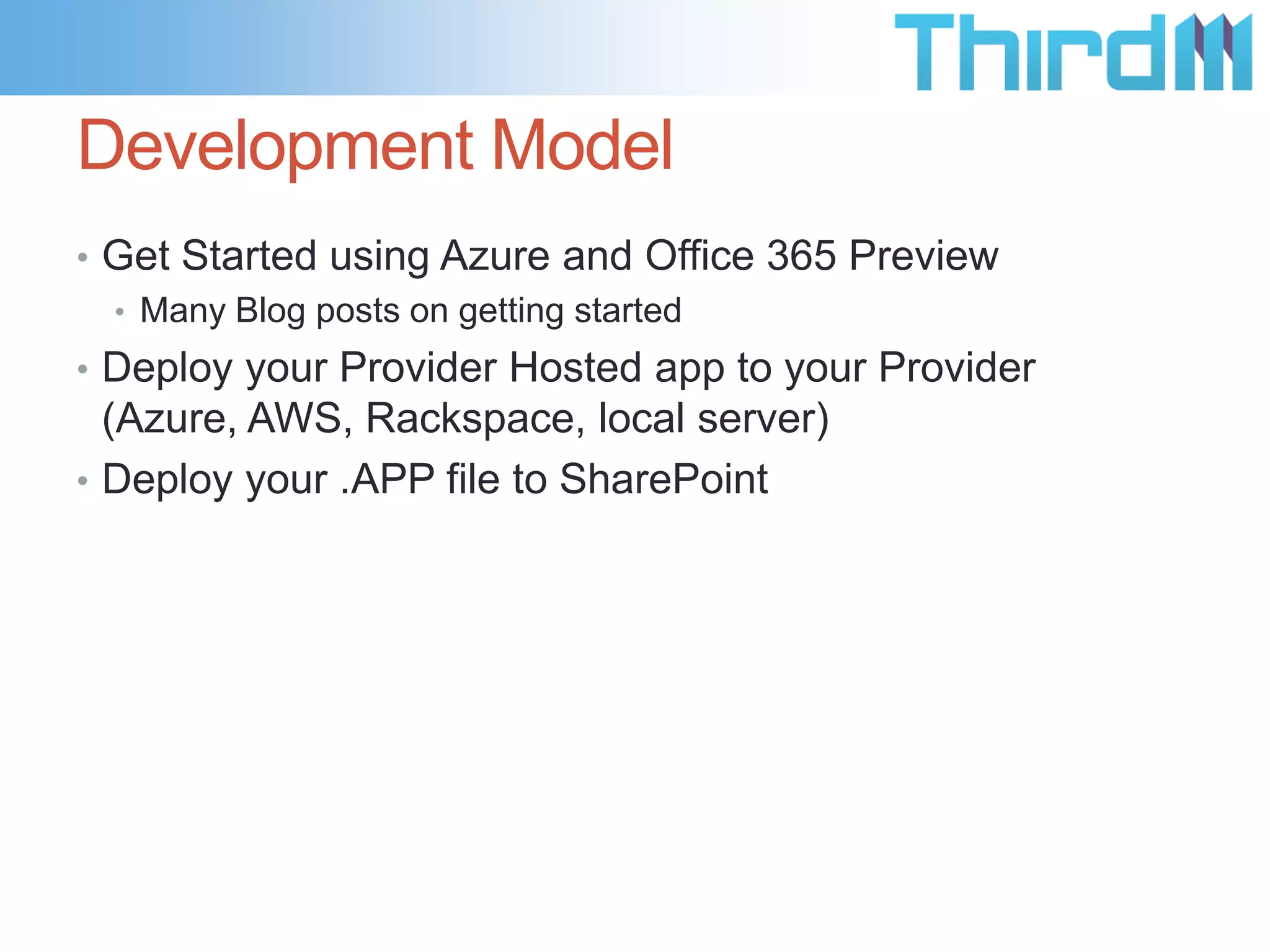
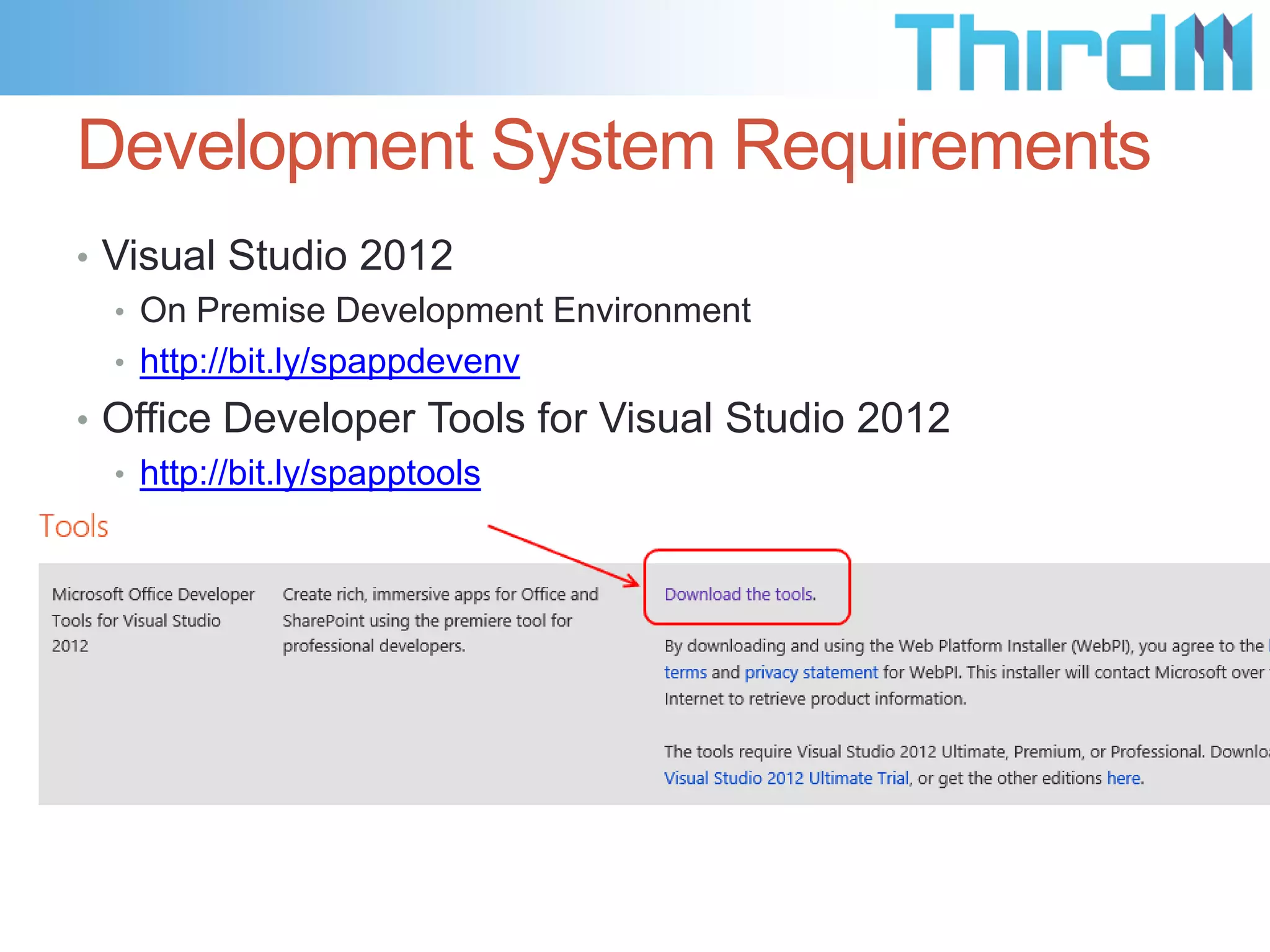
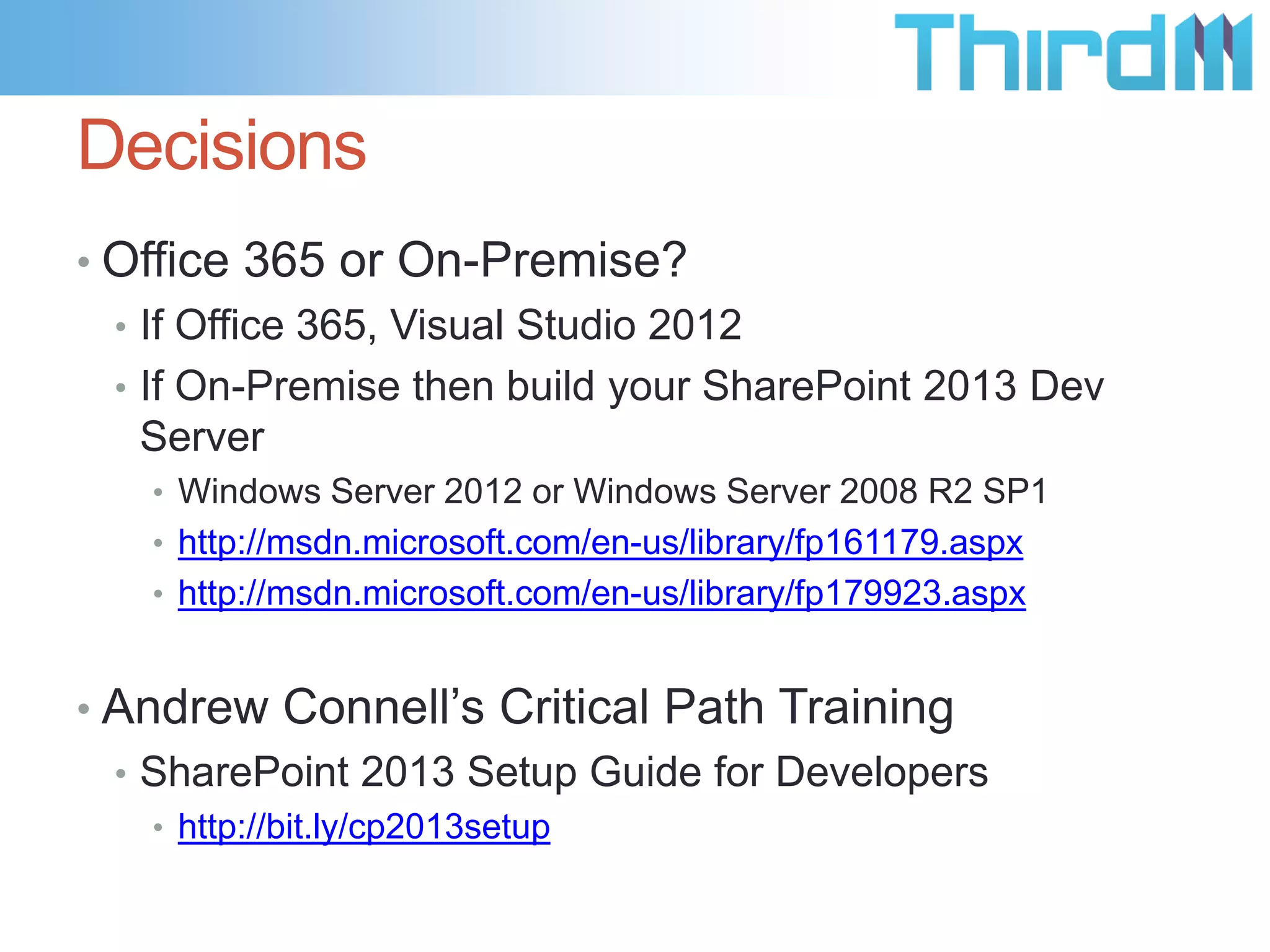
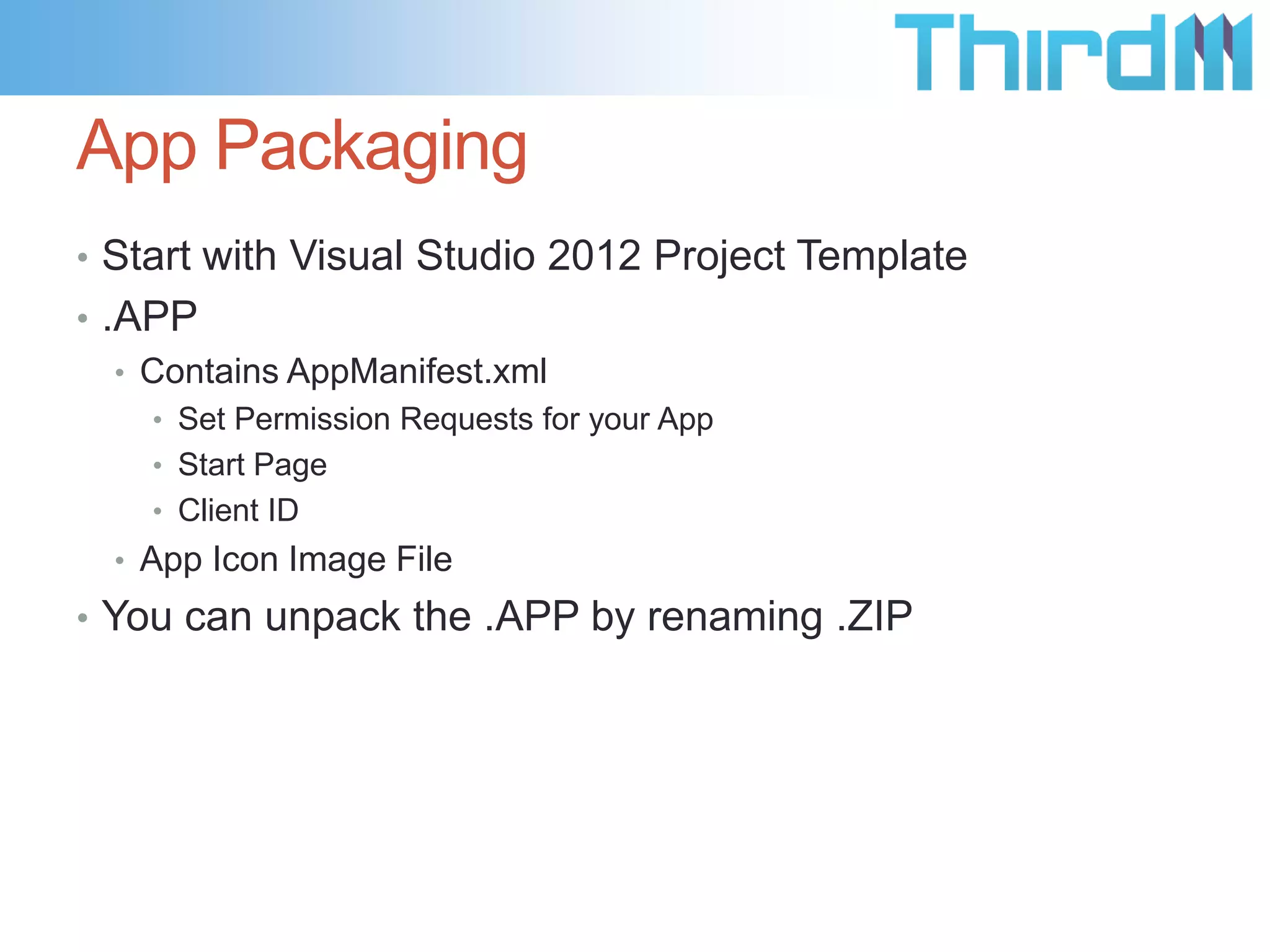
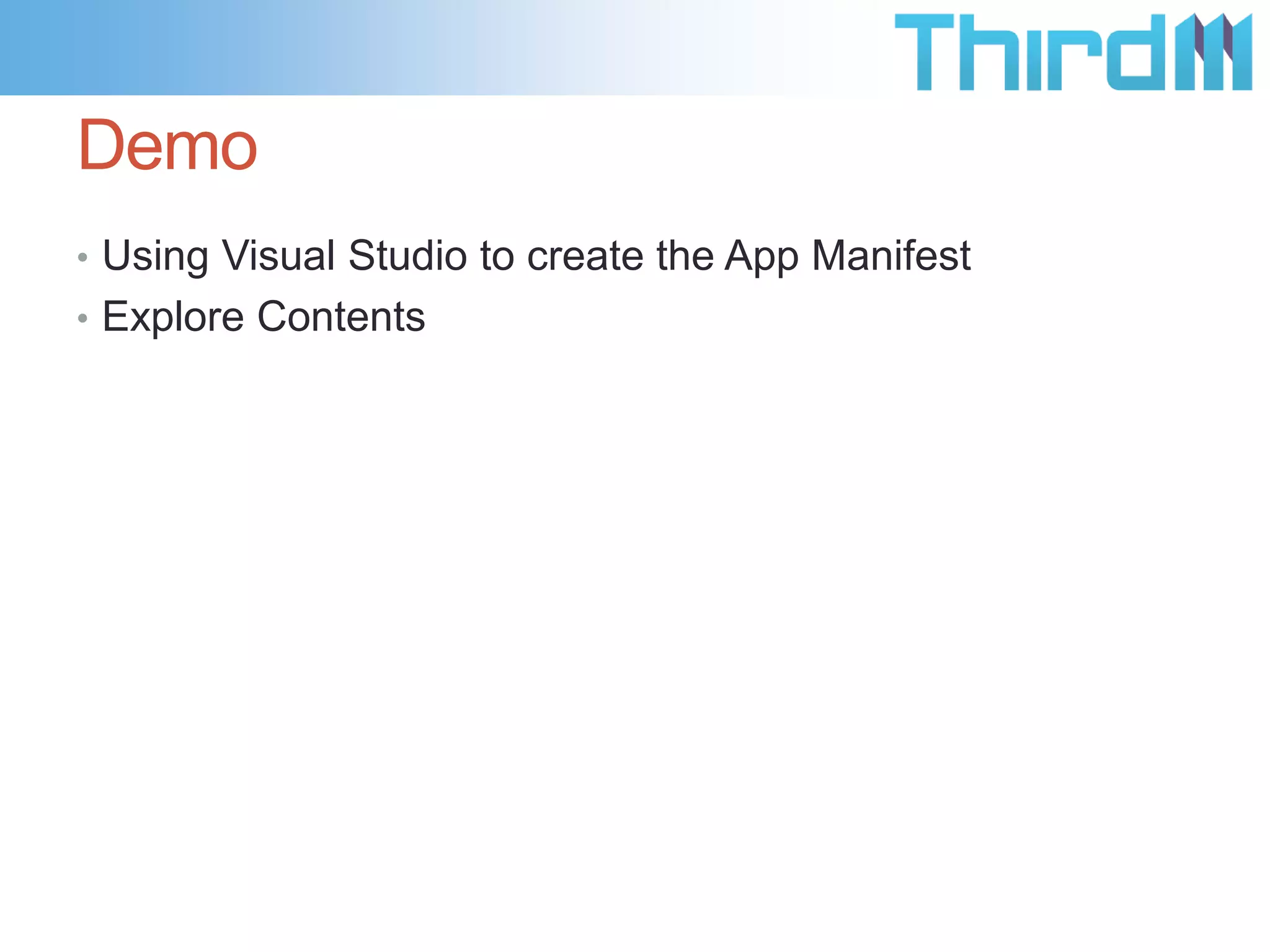
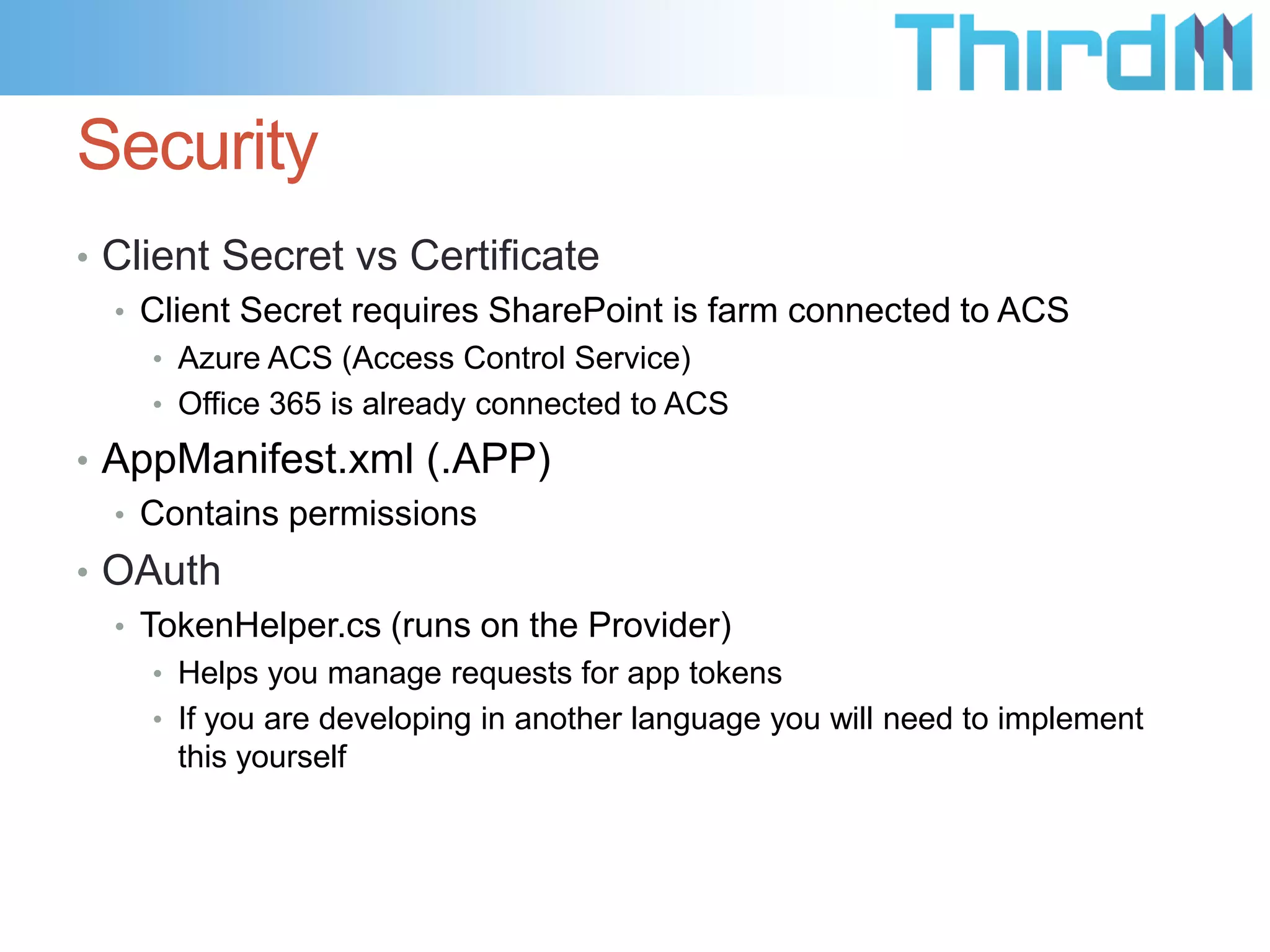
![OAuth Example
TokenHelper.TrustAllCertificates();
string contextTokenString =
TokenHelper.GetContextTokenFromRequest(Request);
if (contextTokenString != null) {
contextToken =
TokenHelper.ReadAndValidateContextToken(
contextTokenString, Request.Url.Authority);
sharepointUrl =
new Uri(Request.QueryString["SPHostUrl"]);
accessToken = TokenHelper.GetAccessToken(
contextToken,
sharepointUrl.Authority).AccessToken;
CSOM.CommandArgument = accessToken;
}](https://image.slidesharecdn.com/developingaproviderhostedsharepointapp-130313172415-phpapp01/75/Developing-a-Provider-Hosted-SharePoint-app-18-2048.jpg)
